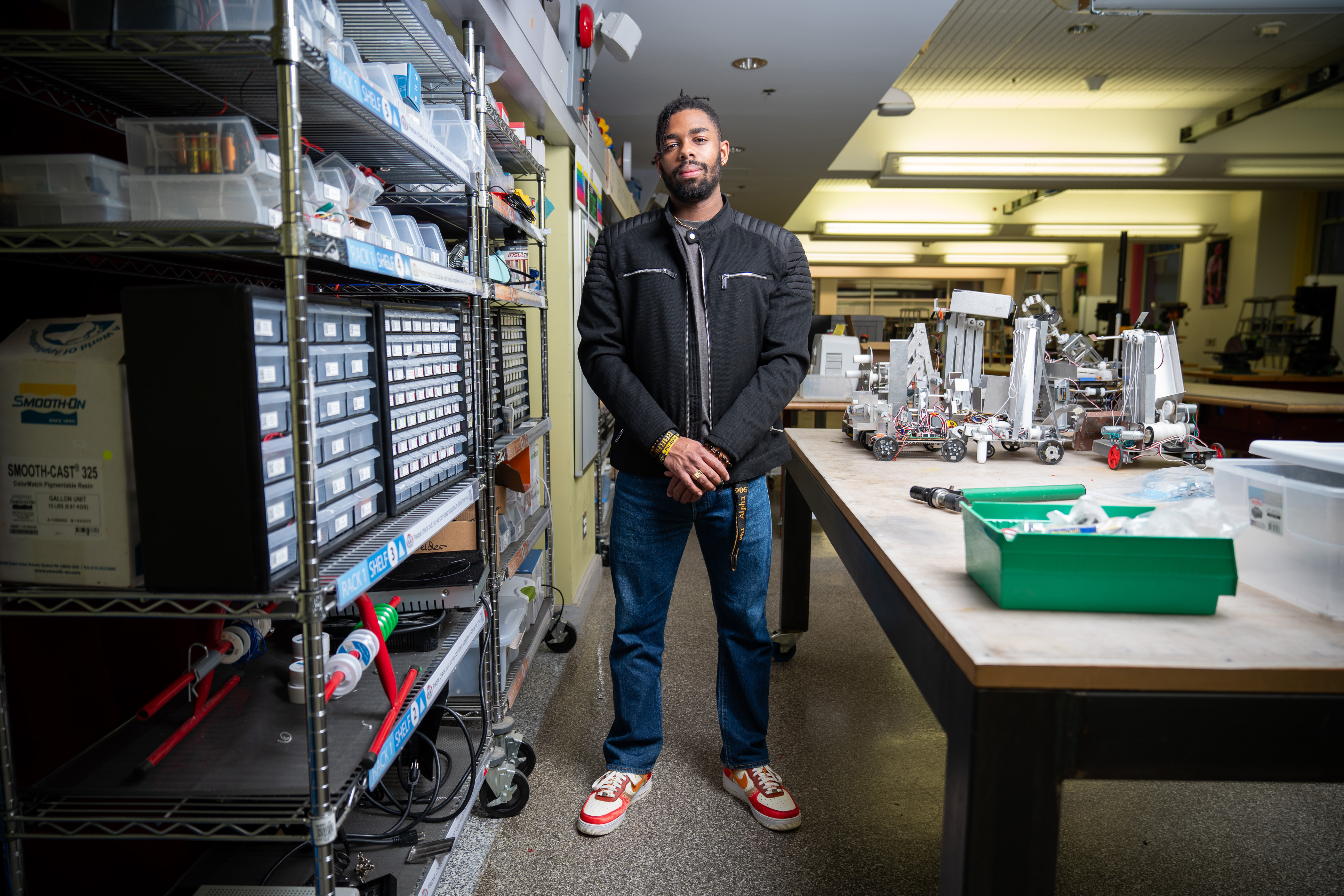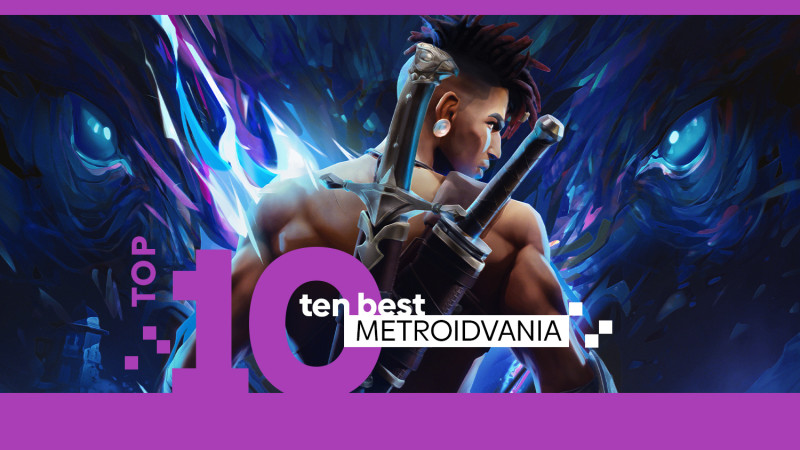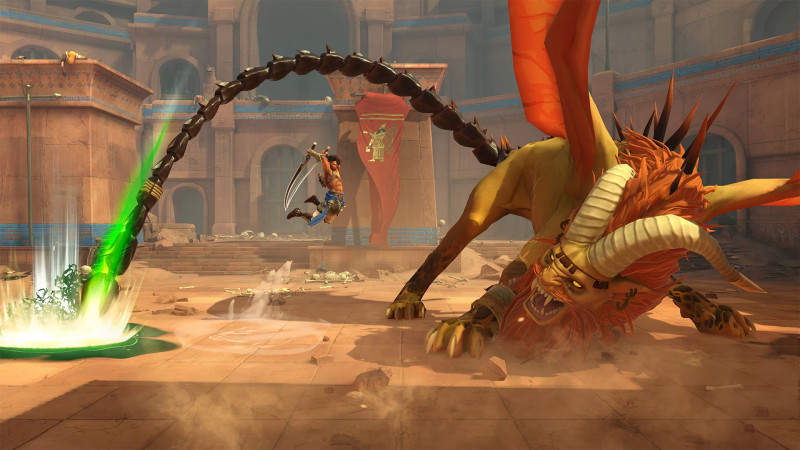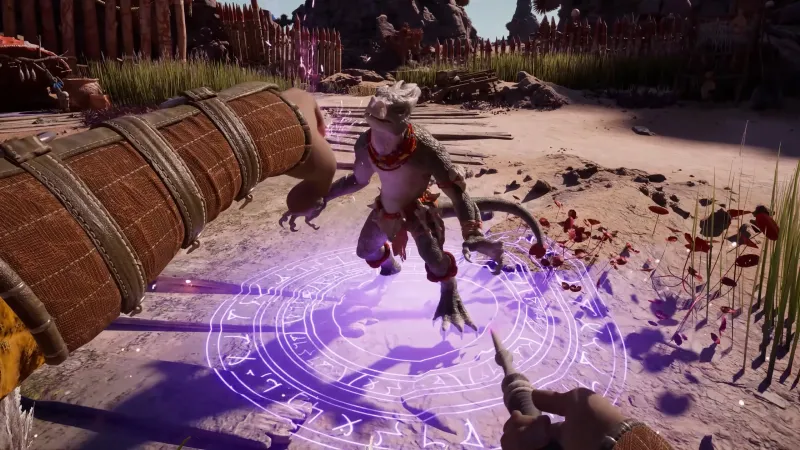Astronomy’s new blockbuster was announced in New Orleans during the 2024 American Astronomical Society meeting. Astronomers from the…
The Friday Roundup – Video Creation Hacks and Using White Text
How to Create More videos in Less Time – 10 Life Hacks The harsh reality that just about every YouTuber hits up against sooner rather than later is the ever present demand for new content. No matter how you look at it the Youtube algorithm is…
Baran Mensah: Savoring college life in a new country

MIT senior Baran Mensah recalls taking apart his toys as a child, curious to see how every piece worked. When his mother explained to him what an engineer was, he knew that’s what he wanted to be.
Mensah wasn’t particularly familiar with the culture of MIT while growing up in Ghana. But for the last four years, he has dug deeply into many aspects of college life, choosing a major in mechanical engineering and a minor in music, and exploring a wide array of extracurricular activities. In addition to holding significant leadership roles in the Chocolate City living group, he has performed with Sakata Afrique, MIT’s Afro-Caribbean dance group, and belongs to the Rho Nu chapter of Alpha Phi Alpha Fraternity.
His approach to research internships has been equally expansive. During his first year, he worked as a residential facilitator for the Office of Minority Education’s Interphase EDGE program, which invites admitted MIT students to campus before the academic year begins. Having benefited from the program himself, Mensah says he wanted to give back as a facilitator. He also helped develop a software toolkit to expose K-12 students to the field of soft robotics, in the Conor Walsh Lab at Harvard University. Most recently, he was a missions operations intern at NASA’s Jet Propulsion Laboratory, where he worked on automating command generation for the Surface Water and Ocean Topography (SWOT) satellite.
After graduation, Mensah intends to attend graduate school and continue his studies in mechanical engineering. He hopes to then work on robotics hardware, perhaps for legged or biomimetic robots, and to stay in the Boston area for a while. While he’s remaining open to new opportunities as they arise, he ultimately hopes use his engineering skills to help improve socioeconomic conditions in his home country of Ghana.
MIT News interviewed Mensah to learn more about his life as a student.
Q: What is your favorite area of mechanical engineering?
A: My specific focus is robotics. As long as I can work on a piece of hardware controlled by some software that does cool and interesting things, I will be happy. Soft robotics would be an interesting route to pursue but I’m not married to any specific branch as of yet. One particularly interesting project I worked on involved a swimming robot that used electromagnetic actuation coupled with soft robotics to mimic the swimming of a fish.
I think while the soft robotics part was extremely novel and fascinating, I was more excited about the mimicry of nature using robotics. Robots such as the MIT cheetah or robots at Boston Dynamics are what excite me the most at this moment. It’s an intersection of not only mechanical engineering, electrical engineering, and computer science, but biology as well. I often find that the more subject areas a project intersects with, the more exciting it is.
Q: Tell us about your communities on campus.
A: My primary one is Chocolate City at MIT. We’re able to foster a community that allows a lot of people to feel comfortable at MIT. It’s about 30 people, so you’re able to get close friends and bonds, which sometimes can be really hard. And we really push people as well to be involved in the community and active.
The next big one is my dance group, Sakata Afrique. Dancing is something that I didn’t really think I would get into, but I got here and really enjoyed it. And it’s now a big part of my life. It’s really important for that reason, but also because an Afro-Caribbean dance group allows me to display and show my culture, in a sense.
I’m a member of the Rho Nu chapter of Alpha Phi Alpha Fraternity Incorporated. It’s the first intercollegiate Greek-letter fraternity established for African American men, and this chapter serves the campuses of several universities, so from that, I’ve been able to interface with a lot of different people from outside of MIT, which is great. And it’s allowed me to develop myself as a man and learn a lot of different things.
Q: What are some of your favorite memories from your time with these groups?
A: For Chocolate City, one of my fondest memories is the first party that we threw in February of 2021. When we came back to campus a lot of people didn’t really know who we are, and we needed to revive the group. The day of the party, we knew we’d sold 500 tickets, but actually seeing all these people coming in, I was like, “Wow, we really did this.” It was a big thing for me, because this was the first time I’d ever been responsible for marketing an event this large.
For Sakata, a highlight was last year when we had our show, Afro Shake. Right before we went on stage to dance it was a rush of emotions, because this was something that me and my co-choreographer had been working on for basically a whole year. And this was the accumulation of all of our work.
In my fraternity, we had a poetry event in February of last year. Seeing how everybody enjoyed the event and learned something new really felt good because it was me and my line brother’s first program, so it was a big thing that we put a lot of work into and seeing that pay off was really amazing.
Q: How did you balance everything with your studies?
A: Time management is extremely important. The busier I got, the crazier my calendar would look. I’d have times when I scheduled when I had lunch. If I only had one hour to do an assignment I had to make the hour count. It was definitely very hard, but I think it’s a big teaching tool. You have a lot more time than you think you do. A lot of it just goes to waste. There’s a lot of ways you can very strategically [optimize] your time.
Q: What do you do in your down time?
A: Dancing is a big one. Working out, if I have time. I’m into music. I’m a music minor, actually. I play guitar often, as it’s a really good outlet, [and] especially good for expanding my musical diversity because I feel like the type of music that I listen to on a daily basis is not the same type of music that I play on the guitar. So, it really forces me to listen to other types of music, which I enjoy.
Q: Have you had a music minor the whole time you’ve been in undergraduate?
A: No. Coming to MIT, I wanted to concentrate in Spanish for my [humanities, arts, and social sciences requirement] because I’d done Spanish for nine or 10 years. But then seeing the wealth of music classes, I realized this was something that I really wanted to take advantage of. I think music was something that I always wanted to do, but I never really had the resources available until now. With music and with other areas of life, what I’ve learned is that sometimes it might serve you well to just not know what your plan is, and be very open, and see what happens.
Q: Even without a specific plan, do you think you might return to Ghana in the future?
A: I do hope to return at some point, and that I will be able to contribute to uplifting my country in a socioeconomic sense. I envision setting up a foundation that not only offers access to novel technology to solve complex issues, but also helps provide high-quality, affordable educational opportunities. Although I have had this goal for a while, my friend Wilhem Hector has inspired me to look at driving change in this way. I am still unsure about how, exactly, I will go about doing this, but with every passing day, the road forward is slightly clearer.
DANA in Ukraine – This Invention From Former Czechoslovakia is Still Highly Valuable – Technology Org
Ukraine is using a variety of different artillery systems to defend itself from Russian aggression. Due to the…
Top 10 Metroidvanias To Play Right Now

PlayStation 4, Xbox One, Switch, PC, iOS, Android
Bloodstained may as well be called “Castlevania: Symphony of the Night 2”. After all, it comes from Symphony’s mastermind and Castlevania luminary Koji Igarashi and carries many of the series’ classic elements while introducing cool new ideas on top. Players explore a gothic castle overflowing with secrets while slaying supernatural foes using weapons such as swords, axes, and, of course, a whip. Killing enemies feels extra rewarding since they drop shards that bestow cool powers that can turn the tide of battle. The more shards you collect, the more comprehensive your ability pool to create multiple loadouts suited for any situation. When you aren’t fighting the forces of darkness, you help surviving townsfolk by completing bounties, farming crops, cooking recipes, and other engaging diversions. Best of all, a ton of post-launch updates have only sweetened Bloodstained’s package. If you’ve been dying for something more “Vania” than Metroid, Bloodstained is a must-play. | Our Review
Four Ways Prince Of Persia: The Lost Crown Gets The Genre Right
The revival of this long-dormant franchise moves into the gear-and-power-gated family of games colloquially termed Metroidvanias, thanks to its similarity to early classics like Super Metroid and Castlevania: Symphony of the Night. It’s a genre that has been gaining traction in recent years, but Ubisoft’s return to the Prince of Persia franchise is one of the best we’ve seen in a long time. It’s even managed to make a spot for itself on our list of the Best Metroidvania Games you should make a point to play.
The Lost Crown is also notable for the way it advances this game style with novel ideas and mechanics. While not everything on this list is brand new, these features combine to make Ubisoft’s new adventure one of the most rewarding, approachable, and satisfying releases in the genre, and an early standout release at the beginning of 2024.
All About The Map
Early games like Super Metroid offered a large map for exploration, but much of it was unavailable until you had additional capabilities. That defining feature of the genre is present in The Lost Crown, but it allows clever players to leverage several in-game systems to reduce aimless wandering and instead keep the focus on interesting encounters and puzzles.
The most significant way it does that is through Memory Shards, which let players capture a screenshot of a specific location they’re standing in, and that screen then appears on the main map, viewable just by scrolling over it. It’s a simple but extremely helpful tool that resembles common jigsaw puzzle techniques. When you find a puzzle piece with an unusual or notable shape or image, you set it aside and wait to find its match. Here, you locate a particular insurmountable obstacle and set it aside until you have the matching power to surmount it.
On top of that, The Lost Crown’s map supports thoughtful and customizable navigation, such as distinct markers a player can put down to indicate different targets, as well as a choice between exploration and guided mode. The latter lets players see where the subsequent major story-progressing sequences are but doesn’t tell you how to get to them; the fun of discovery is still there, but it’s not as aimless or as dependent on in-world clues as exploration mode.
The game also adds a simple but surprisingly helpful tool around save points. In many games of this style, a wrong turn can mean that you miss a critical save point by turning left when that desperately needed save point was to the right. In Prince of Persia: The Lost Crown, a clearly identifiable golden wind appears in nearby chambers that lead to a save point, helping ensure you don’t miss it. It’s a meaningful aid and takes away an element of frustration and difficulty that was never really an enjoyable aspect of the genre.
A Consistent And Uniting Theme
Prince of Persia games have always been about the concept of time in one way or another, but The Lost Crown takes that focus to a new level. By making the entire game – from storytelling to mechanics – focus on the nature of time, the totality feels united and compelling.
Sargon’s journey across Mount Qaf sees time constantly in flux, with story elements suggesting that time is both mutable and can change based on our perception of it. But rather than just discussing that concept in the storytelling, the entire game revolves around time. Your powers are all about the manipulation of time and space. Distinct areas across the map play with unusual twists on time – from day and night cycles to dramatic frozen moments. Even combat and traversal rely heavily on careful observation and timing to find any measure of success.
The result is a game that feels like it’s communicating a cohesive theme across all its facets.

Focus on Precision
Exploring a vast open map, backtracking to earlier locations, and solving navigation challenges are all concepts that appeal to a mindset of careful observation and thinking. So why would a game like this also veer into imprecise and wild approaches to action? Prince of Persia: The Lost Crown keeps precision play a staple across all elements of gameplay.
Combat in the game is always about watching your enemy and reacting intelligently to their attacks. Mastery of parries, dodges, dashes, and jumps is as crucial as any sword or bow attacks you might wield. The combat provides a refreshing and challenging approach, with regular injections of new attack and defense options, an increasingly complex array of enemies to parse, and bosses that demand careful use of available powers.
Likewise, traversal sequences are often about extremely precise button presses to avoid Mount Qaf’s many traps and dangers. After decades of playing games, it’s rare that a puzzle or navigation area feels genuinely new or surprising to me. But Prince of Persia: The Lost Crown frequently provides that sensation, with tricky moments that left me smiling at the clever structures.
From a design perspective, the game also uses its play spaces with precision. If a room is large and open, there’s often a reason for it, encouraging players to attempt to reach its furthest and highest corners. If a combat chamber is tight and constrained, it forces the player to leverage every ability to confront an enemy’s capabilities.
The insistence on precision increases the sense you’re playing a game that demands attention and observation at every turn – there’s little in the way of boring moments since every action, reaction, and direction you move has a purpose and the threat of danger.
Accessible to All
Increased attention on accessibility for all players has been a big focus for game developers in recent years. It’s been incredible to see game makers working hard to make their games playable and enjoyable by the largest percentage of players. In this arena, Prince of Persia: The Lost Crown leads the genre of Metroidvania titles in many ways.
High-contrast visual mode options ensure aid for players with specific color blindness and other low vision needs; The map tracking and memory shard feature helps players with visual memory issues; A platforming assist option lets players jump past the most complicated traversal sequences with a unique portal system; Combat difficulty can be fully tweaked to make timing windows more generous, add additional aim assist, and more; Controls are globally remappable; Subtitles have numerous adjustable options for those with hearing issues. With these and other features, Prince of Persia: The Lost Crown keeps the game rewarding for a broad swath of potential players.
Importantly, these accessibility features are entirely optional and changeable at your desire. Beyond the inherent value of opening up the game to the players who need these options, everyone should feel good about these types of inclusions, especially as they make their way into genres (like these types of Metroid-inspired games) that have sometimes not featured the options. More players of a good game helps developers and publishers find success. In turn, those additional paying customers make it more likely that good games and developers will continue to make more games. It’s a win-win-win.
Prince of Persia: The Lost Crown is a return to a venerable franchise, but the game’s shift into a new style invigorates the series and makes it feel new again. Not only is it a great game, but it also sets some high bars for several innovative elements, which other developers within the space would be wise to emulate. If you haven’t already put the game on your radar as an early play in 2024, it deserves serious consideration.
10 Best AI Photo Editing Tools (January 2024)
In the ever-evolving landscape of digital imagery, AI photo editing tools offer an array of functionalities that transform the art and efficiency of photo editing. These tools, powered by advanced artificial intelligence, are revolutionizing the field, making professional-grade photo editing accessible to both amateurs and professionals…
Reprogramming the Future: How AI is Redefining Developers and Languages
The era of AI-powered programming is upon us, and it’s not just a supporting act; it’s stealing the limelight. AI is already rewriting the rules of code creation. However, this is just the tip of the iceberg when it comes to its potential. In the not-so-distant…
Future-Ready Enterprises: The Crucial Role of Large Vision Models (LVMs)
What are Large Vision Models (LVMs) Over the last few decades, the field of Artificial Intelligence (AI) has experienced rapid growth, resulting in significant changes to various aspects of human society and business operations. AI has proven to be useful in task automation and process optimization,…
Obsidian Showcases Avowed Combat
Obsidian has been working for years on Avowed, a first-person fantasy RPG set in the same world as its excellent Pillars of Eternity games. Unlike the isometric styling of those titles, Avowed is a first-person adventure more in the vein of something like The Elder Scrolls, Fallout, or The Outer Worlds.
Today’s Xbox Developer Direct offered a deeper dive into several important aspects of the game, but the standout feature was an explanation of combat, which aims to be action-oriented but still tactically complex. Players are allowed to use customizable loadouts, including selecting different weapons or other tools for each hand. We saw combinations of swords, shields, wands, and spell usage, and pistols. Once in combat, the mix of various offensive skills with defensive capabilities like blocks and parries makes it look like a genuinely engaging approach to battles. I’m especially stoked about dual-wielding wands.
Beyond a slick combat system, we also learned more about Avowed and its approach to quests and conversations. The game seems to focus on morally complex and uncertain situations where the player must make choices that shape subsequent outcomes in the story. That’s pretty par for the course in the genre, but it was nice to see the system in action through a sidequest about several killed soldiers and a player character who had to decide if one of the soldiers had been a coward and fled, leaving the others to their doom.

Obsidian also discussed the game’s art style across the Living Lands locale, where players will be trying to resolve a mysterious spiritual plague that has overtaken this part of the fantasy world. The developers have put a big focus on the contract between dull and vibrant, as well as between verdant and corrupted areas, leading to a sense of tension between two extremes in many of the places you might visit. Every site we saw looked beautiful, and it seems like a game destination that will be great fun to explore.
My sense is that many players are hungry for a new first-person fantasy adventure. We’ve yet to get our hands on the game, but today’s dive into some of its systems only increased my belief that Obsidian is pulling together something special with the game.
I’m eager to see how it comes together when Avowed releases on Xbox Series X/S and PC, including Game Pass, in the fall of this year.
